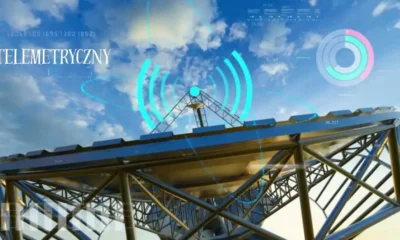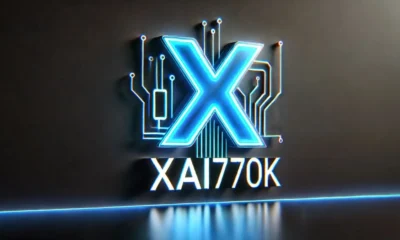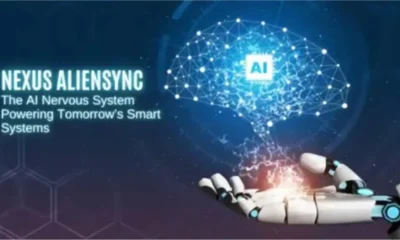GENERAL
Exploring Tech Etruesports: How Technology is Shaping Competitive Gaming
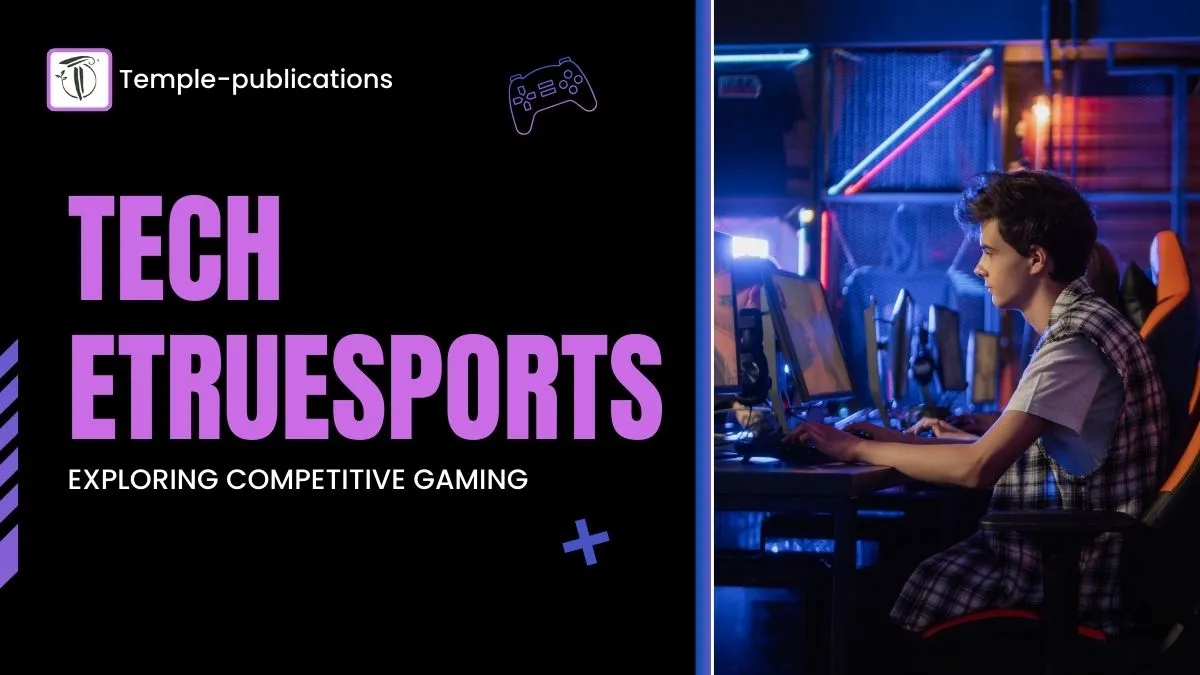
Tech Etruesports is a magnificent and technologically advanced portion of the eSports industry that deals with professional gaming and advanced technologies. It is no longer a simple competition that takes place in a local arcade or a group of friends LAN parties but rather large-scale tournaments, millions of viewers, and technological advancements that improve both the performers and the audience experience.
Originally, eSports has been around as early as video gaming itself, but Tech Etruesports has evolved a lot since then. Today, competitive gaming uses high-quality hardware components, virtual reality systems, analytics, and sometimes even AI-based training applications.
Evolution of Tech Etruesports
The growing use of technology enabled Tech Etruesports to progress from local LAN competitions to global events. Some of the first eSports events such as The Evolution Championship Series (EVO) and The International for Dota 2 were instrumental in making eSports go professional. This was followed by the emergence of online streaming services such as Twitch which also boosted the expansion of the industry.
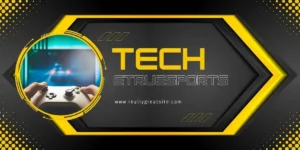
Key Genres in Tech Etruesports
Real-Time Strategy (RTS)
Games like StarCraft and Warcraft were among the first competitive ones in eSports, although they belonged to RTS. These games are most favored in early tournaments since they are also centered on resource management, strategic planning, and decision-making.
First-Person Shooters (FPS)
First-person shooter games such as Counter-Strike, Call of Duty, and Valorant are very famous. A sports game is usually characterized by one-on-one play, team harmony, and strategies. As for shooters, FPS has been an appropriate category as it has remained popular in competitive gameplay as it is fast and requires a lot of skill.
Multiplayer Online Battle Arenas (MOBA)
Immediate strategy and more specifically Multiplayer Online Battle Arena games like League Of Legends and Dota 2 have become popular with millions of viewers tuning in to watch tournaments. The fact that those are the games based on strategies, collaboration, and speed, makes them a focal genre known as MOBAs.
Battle Royale Games
Epic Games’ Fortnite BR with other games of a similar genre such as Apex Legends and PUBG gave a start to a novel type of competition. Two or more players fight till the last man using survival skills and fighting strategies available while battling in big arenas on the internet.
Major Tech Etruesports Tournaments and Leagues
- The International (Dota 2): The most significant eSports event that gathers more significant prize money, which is in millions.
- League of Legends World Championship: This event attracts millions of viewers each year making it one of the biggest eSports events around.
- Fortnite World Cup: Specifically, it is a battle royale game that has made eSports widely recognized by people.
- EVO Championship Series: Top tier FEAT event that showcases the ability and accuracy that is present in fighting games.
Technology and Its Role in Tech Etruesports
High-Performance Gaming PCs
Half a second was the difference between winning the race and losing it according to Tech Etruesports. They however have no choice but to have high-performance gaming PCs. They enter with powerful cores, graphical processing units, and ultra-fast solid-state drives, which make for smooth, lag-free gameplay in present-day complex titles. Furthermore, competitive players often prefer monitors with high refresh rates (120Hz or 240Hz) and low response time as they allow for better response to events happening in the game.
Virtual Reality (VR) and Augmented Reality (AR)
The technologies, which are still in their nascent stages, may be prominent in the future and include Virtual Reality (VR) and Augmented Reality (AR). Thus, recent VR titles like Echo Arena and Beat Saber demonstrated that games can present new competitive modes of play in which the players translate their movements to a virtual stage.
AR is also in the process of improving the experience of viewers. With AR, broadcasts can display stats, players, and the map of the game on the live footage so that the viewers of the event get a better experience.
Cloud Gaming Platforms
Cloud gaming is an innovative gaming platform that could be beneficial to Tech Etruesports by streaming it from the cloud without the need for high-end graphics hardware. Some of the examples of game streaming services include Google Stadia, NVIDIA GeForce Now, and Microsoft xCloud where high-performance games can be played on any device with an internet connection.
Esports and cloud possibilities can lower the installed-based cost and potentially open up the market to a larger audience worldwide. In cloud gaming, talented Tech Etruesports athletes who may not be able to afford powerful machines elsewhere can compete on equal footing, having nowhere else to start but the cloud.
Artificial Intelligence (AI) and Machine Learning
Tech Etruesports has received the impact of artificial intelligence and machine learning in many ways ranging from improving gameplay to evaluating performance. Bots, for example, OpenAI’s Five employed in Dota 2, have advanced to a reasonable level and are capable of defeating some of the best players in the world. These bots are not only good for arranging very difficult practice games but also for providing overall game balance and categorization. On the other hand, machine learning algorithms are being used to analyze the performance of the players.
Blockchain Technology and NFTs
Blockchain solutions are entering the Tech Etruesports corporation, especially in the form of Non-Fungible Tokens (NFT). These assets include skins, weapons, or characters, which may be purchased, sold, or exchanged through NFTs. These virtual commodities can bear economic value and give players satisfaction in managing their favorite games.
Blockchain can also benefit Tech Etruesports in the sense that it is capable of enhancing security in transactions involving prize money, contracts, and sponsorship deals among others. Through the application of blockchain, efficiency can be achieved and fraud in competitions can be minimised in the best way possible.
Data Analytics
Data analytics is becoming even more important in a quest by teams and players to outdo each other. There are special means with the help of which each step of the game can be observed, starting with the movement of separate players and ending with the scenarios worked out by the coaches. In the case of analyzing such data, the teams can determine their blind spots, improve strategies, and make the right decisions at the right time.
The Future of Etruesports
Emerging Trends
- Growth of Mobile Gaming: Mobile gaming is emerging as a bigger factor in eSports with titles like PUBG Mobile and League of Legends.
- Wild Rift: This trend increases the scale of competitive gaming and makes the audience of the genre diverse.
- Increased Integration with Traditional Sports: Currently, there is an increasing association between eSports and conventional sports, whereby eSports organizations are partnering with teams from traditional sports. This trend points to the increased mainstream acceptance and expansion of eSports.
- Advancements in Streaming Technology: New advancements in streaming technology such as increased quality and less delay are making the games more enjoyable to the fans. It is also expected that virtual and augmented reality will also be an influence on the future of eSports.
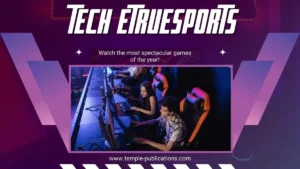
Challenges and Opportunities
Challenges:
- Regulation and Governance: The necessity of organizing and regulating football needs determination and a set of rules to solve the problems connected with cheating and ethical questions like match-fixing or players’ conditions.
- Monetization and Sponsorship: The main challenge of monetizing eSports is how to achieve high revenue while preserving the players and the audience’s satisfaction.
- Technological Accessibility: Translating technological developments into formats available to players and audiences in their correct usage.
Opportunities:
- Global Expansion: Expanding eSports into new regions and markets, increasing its global reach and influence.
- Innovation in Game Development: Continued game design and technology innovation, creating new genres and experiences for players.
- Community Engagement: Strengthening the connection between players, fans, and developers through interactive and immersive experiences.
Conclusion
Tech Etruesports may be a relatively new and developing category in the overall electronic sports industry. Due to the changes in technology and increasing audiences all across the world, eSports is constantly evolving and opening new possibilities for gamers, creators, and viewers. In this context, it is safe to say that the essence of eSports will remain a fascinating and burning issue in the context of the technological development of competitive civilization gaming.
-

 BIOGRAPHY7 months ago
BIOGRAPHY7 months agoBehind the Scenes with Sandra Orlow: An Exclusive Interview
-

 HOME1 year ago
HOME1 year agoDiscovering Insights: A Deep Dive into the //vital-mag.net blog
-

 HOME1 year ago
HOME1 year agoSifangds in Action: Real-Life Applications and Success Stories
-

 BIOGRAPHY1 year ago
BIOGRAPHY1 year agoThe Woman Behind the Comedian: Meet Andrew Santino Wife

